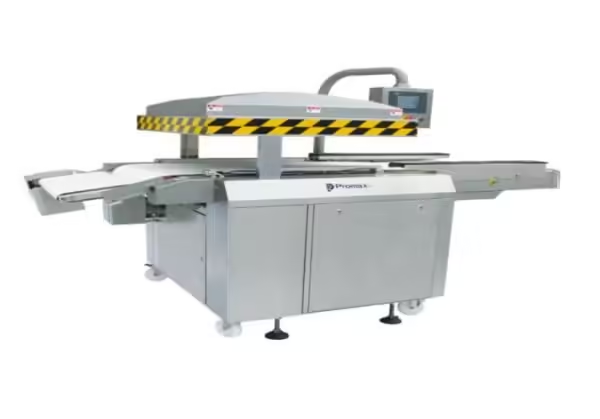Introduction
Vacuum packaging equipment is a critical tool in the food industry, designed to extend the shelf life of products by removing air from packaging and sealing it to create a vacuum-sealed environment. This technology plays a vital role in preserving food quality, preventing spoilage, and maintaining freshness. Widely used in both commercial and residential settings, vacuum packaging equipment has become indispensable for modern food storage and packaging. This article explores the features, benefits, and applications of vacuum packaging equipment, emphasizing its importance in efficient food preservation.
What is Vacuum Packaging Equipment?
Vacuum packaging equipment refers to machinery used to remove air from packaging and seal it, creating a vacuum-sealed environment. This process involves placing food or other items in a plastic bag or pouch, removing the air through a vacuum pump, and then sealing the bag to ensure it remains airtight. The absence of air helps prevent oxidation and microbial growth, thereby extending the product’s shelf life and preserving its quality.
Features of Vacuum Packaging Equipment
Vacuum packaging equipment comes with several features that enhance its functionality and effectiveness. Here are some key characteristics:
Vacuum Pump System
The vacuum pump system is the core component of vacuum packaging equipment. It removes air from the package, creating a vacuum environment that helps preserve the contents. The efficiency of the vacuum pump is crucial for achieving optimal performance and results.
Heat Sealing Mechanism
The heat sealing mechanism ensures that the package is tightly sealed after the air has been removed. This feature creates a strong, airtight seal that prevents any air from re-entering the package, ensuring the longevity and quality of the contents.
Adjustable Settings
Many vacuum packaging machines offer adjustable settings for vacuum strength and sealing time. These controls allow users to customize the packing process based on the type of food and the desired level of preservation, ensuring optimal results for different packaging needs.
Stainless Steel Construction
Most vacuum packaging equipment is constructed from stainless steel, which is durable, resistant to corrosion, and easy to clean. This material ensures the machine’s longevity and maintains high hygiene standards, making it suitable for frequent use.
User-Friendly Interface
User-friendly interfaces with intuitive controls and displays make vacuum packaging equipment easy to operate. These features simplify the packing process, allowing users to achieve consistent results with minimal effort.
Benefits of Using Vacuum Packaging Equipment
Investing in vacuum packaging equipment offers numerous advantages for food preservation and storage. Here are some key benefits:
Extended Shelf Life
Vacuum packaging significantly extends the shelf life of food products by removing air that can cause spoilage and degradation. The vacuum-sealed environment reduces the growth of bacteria and mold, helping food stay fresh for a longer period.
Preservation of Freshness
By creating an airtight seal, vacuum packaging maintains the freshness and quality of food products. The absence of air prevents oxidation and moisture loss, ensuring that food retains its original flavor, texture, and nutritional value.
Prevention of Freezer Burn
Vacuum packaging effectively prevents freezer burn, a condition caused by exposure to air in the freezer. By removing air from the package, vacuum packaging protects food from freezer burn, preserving its quality during long-term storage.
Reduction of Food Waste
Extended shelf life and preserved freshness contribute to a reduction in food waste. Proper storage and preservation help minimize the amount of food that goes to waste, making vacuum packaging a more sustainable option.
Space Efficiency
Vacuum-packed items are more compact than traditionally packaged items, making them easier to store. The space-saving nature of vacuum-packed packages helps optimize storage areas and manage space effectively.
Applications of Vacuum Packaging Equipment
Vacuum packaging equipment is versatile and used in various applications due to its efficiency in food preservation. Here are some common uses:
Food Storage
In both commercial and residential settings, vacuum packaging equipment is used to store a wide range of food products, including meat, poultry, seafood, vegetables, and snacks. The equipment helps keep food fresh and extends its shelf life.
Sous Vide Cooking
Vacuum packaging is an essential technique in sous vide cooking, where food is vacuum-sealed and cooked in a water bath at a precise temperature. The vacuum-sealed bags ensure even cooking and enhance the flavor and texture of the food.
Bulk Storage
For businesses and individuals who purchase food in bulk, vacuum packaging equipment provides an effective solution for preserving large quantities of food. Vacuum-sealing bulk items helps extend their usability and maintain quality.
Packaging of Non-Food Items
In addition to food, vacuum packaging equipment is used to package non-food items such as clothing, textiles, and electronics. The vacuum-sealed environment protects these items from moisture, dust, and damage.
Considerations When Using Vacuum Packaging Equipment
While vacuum packaging equipment offers many benefits, there are important considerations to keep in mind:
Regular Maintenance
Proper maintenance is essential to ensure the optimal performance and longevity of the vacuum packaging equipment. This includes routine cleaning, checking for wear and tear, and addressing any issues promptly to keep the machine in good working condition.
Choosing the Right Bags
Using the appropriate vacuum-seal bags or pouches is crucial for effective results. Ensure that the bags are compatible with the machine and suitable for the type of food or item being packed.
Monitoring Seal Quality
Regularly checking the quality of the seals is important to prevent air from re-entering the package. Ensure that the seals are strong and free from defects to maintain the integrity of the vacuum-sealed environment.
Operator Training
Proper training for operators is crucial to ensure the safe and efficient use of the vacuum packaging equipment. Training should cover the operation, cleaning, and maintenance of the equipment to achieve the best results and prevent accidents.
Conclusion
Vacuum packaging equipment is an invaluable tool for preserving freshness and extending the shelf life of food and other products. With its ability to create an airtight seal, prevent freezer burn, and reduce food waste, vacuum packaging equipment is essential for efficient food storage and packaging. By understanding the features, benefits, and applications of vacuum packaging equipment, users can leverage this technology to enhance food preservation and achieve superior results. Investing in high-quality vacuum packaging equipment can lead to significant improvements in storage efficiency, product quality, and overall convenience, making it a vital asset in modern food preparation and packaging.



